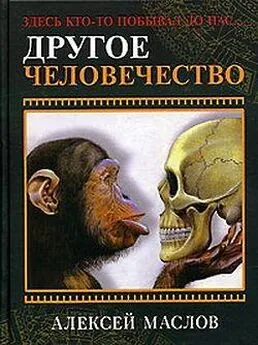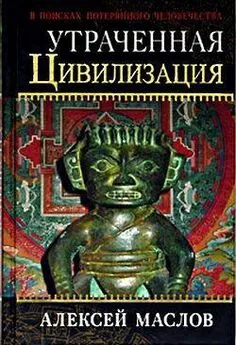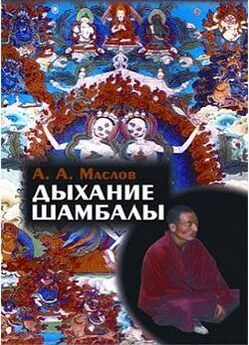Алексей Маслов - Другое человечество. Здесь кто-то побывал до нас...
- Название:Другое человечество. Здесь кто-то побывал до нас...
- Автор:
- Жанр:
- Издательство:Литагент «Неоглори»36100ed1-bc2d-102c-a682-dfc644034242
- Год:2006
- Город:Ростов-на-Дону
- ISBN:5-222-07913-9
- Рейтинг:
- Избранное:Добавить в избранное
-
Отзывы:
-
Ваша оценка:
Алексей Маслов - Другое человечество. Здесь кто-то побывал до нас... краткое содержание
Современное человечество не является ни «венцом творения», ни результатом долгой эволюции. Оно вообще возникло, кажется, ниоткуда, внезапно и одномоментно. А до нас на этой земле жило много видов человечеств. И ни один их тех, кого мы считаем нашим предком, не был даже нашим «родственником».
И эти – другие человечества – оказались значительно более успешными, чем мы сами, и прожили они в десятки раз больше, чем сегодня существуем мы. Кажется, разные виды человечества возникают и исчезают на земле циклическим образом – человечество «обнуляется», приходит к своему началу, и все начинается вновь.
И миллионы лет назад на планете существовали совсем другие цивилизации, абсолютно непохожие на нашу, населенные другими видами людей.
Они не были «тупиковыми» ветвями. Вполне возможно, что «тупиковыми» как раз являемся мы…
Так откуда же взялось современное человечество? И суждено ли ему стремительно исчезнуть?
Другое человечество. Здесь кто-то побывал до нас... - читать онлайн бесплатно ознакомительный отрывок
Интервал:
Закладка:
Почему это произойдет? Увы, к этому есть множество причин: крупнейшие экологические катастрофы, истощение ресурсов земли, новые неизлечимые болезни.
Мы слишком верим самим себе, слишком гордимся своими достижениями и слишком доверяем своему разуму. Мы слишком заносчивы, полагая себя высшим существом на этой земле и рассуждая о наших «примитивных предках». А ведь, возможно, мы сами – не более чем «сбой» в отлаженном миллионами лет природном механизме.
Но род Человека не исчезнет. Он как бы «обнулится», придет к изначальной «дикой» стадии развития – и начнет все вновь. Колесо истории провернется. И для них, как и для нас десятки тысяч лет назад, придет «Заря цивилизации».
Библиография
1. Abbate E., Albianelli A., Azzaroli A., Benvenuti M., Tesfamariam B., Bruni P. et al. A one-million-year-old Homo cranium from the Danakil (Afar) depression of Eritrea / Nature, 1998, N 393:458.
2. Ackerman, S. European Prehistory Gets Even Older // Science, 246, 6, October 1989, pp.28–30.
3. Adcock G.J., Dennis E.S., Easteal S., Huttley G.A., Jermiin L.S., Peacock W.J. et al. Mitochondrial DNA sequences in ancient Australians: implications for modern human origins. Proceedings of the National Academy of Sciences, USA, 2001, N 98:537-42.
4. Aiello L. and Collard M. Our newest oldest ancestor? Nature, 2001, N 410:526-7
5. Aiello L amp; P. Wheeler. The Expensive-Tissue Hypothesis: The Brain and the Digestive System in Human and Primate Evolution // Current Anthropology, April 1995.
6. Allan D.S and Delair J.B. When the Earth Nearly Died. Bath, 1995
7. Andel, van Tjeerd Consider the Incompleteness of the Geological Record // Nature, Vol. 294, December 3, 1981.
8. Arif Y, Y. Kaifu, H. Baba, M. E. Suparka, and Y. Zaim, 2002. Preliminary observation of a new cranium of Homo erectus (Tjg-1993.05) from Sangiran, Central Jawa. Anthropological Science. 110:165–178.
9. Arrhenius, Svante. Worlds in the Making. London, 1908.
10. Asfaw B., Gilbert W.H., Beyene Y., Hart W.K., Renne P., WoldeGabriel G. et al. Remains of Homo erectus from Bouri, Middle Awash, Ethiopia // Nature 2002, N 416:317-20.
11. Asfaw B., White T.D., Lovejoy C.O., Suwa G., and Simpson S. Australopithecus garhi: a new species of early hominid from Ethiopia // Science, 1999, № 284:629-35.
12. Baba H et al. Homo erectus Calvarium from the Pleistocene of Java // Science 2003 № 299: 1384-1388
13. Baba, H., F. Aziz, and S. Narasaki, 1999. Functional morphology of the Nuchal area in Javanese Homo erectus, Sangiran 17, and a giant Sumo wrestler, the late Mr. Dewagatake. Perspectives in Human Biology. 4-81-88.
14. Baffier D. Les Dernier Neandertaliens. Paris: La mason des roches, 1999.
15. Baigent M. Ancient Traces. Mysteries in Ancient and Early History. London: Viking, Penguin, 1998.
16. Balinski, B. I. On the Eye Cup-lens Correlation in some South African Amphibians // Experimenta, 1951, 1,180-1.
17. Balter M. and Gibbons A. A glimpse of humans first journey out of Africa // Science, 2000, N 288:948-50.
18. Balter M. and Gibbons A. Were «Little People» the first to venture out of Africa? // Science, 2002, 297:26-7.
19. Bamshad M.J et al. Human Population Genetic Structure and Inference of Group Membership. // American Journal of Human Genetics, March 2003, Vol. 72, No. 3,
20. Barghoorn E. The Oldest Fossils // Scientific American, 1971, 224(5)30.
21. Barinaga M. «African Eve» backers beat a retreat // Science, 1992, 255: 686-7.
22. Barnes T. G. Origin and destiny of the Earth’s magnetic field. San Diego: Institute for Creation Research, 1983.
23. Becker, G.F. Antiquities from under Tuolumne Table Mountain in California // Bulletin of the Geological Society of America, 2, 1891, pp. 189–200.
24. Beer G. A Handbook of Evolution. London: British Museum of Natural History, 1970.
25. Begun D.R. The earliest hominins – is less more? // Science, 2004, N 303:1478-80.
26. Berger L. Dawn of Humans. Redrawing our Family Tree? // National Geographic, August 1998, vol. 194, № 2: 92–99.
27. Bermudez de Castro J.M., Arsuaga J., Carbonell E., Rosas A., Martinez I., and Mosquera M. A hominid from the lower Pleistocene of Atapuerca, Spain: possible ancestor to Neandertals and modern humans // Science, 1997, N 276:1392-5.
28. Black, M. The constitution of chalk. Report of lecture // Proceedings of the Geological Society, 1953, No. 1499, IXXRI–VI.
29. Blumenschine R.J., Peters C.R., Masao F.T., Clarke R.J., Deino A., Hay R.L. et al. Late Pliocene Homo and hominid land use from western Olduvai Gorge, Tanzania // Science, 2003, N 299:1217-21.
30. Boaz N. T., and Russel L. Ciochon. Dragon Bone Hill: An ice-Age Saga of Homo erectus. Oxford: Oxford University press, 2004
31. Boaz N. T. and Russell L. Ciochon. Dragon Bone Hill: An Ice-Age Saga of Homo erectus. Oxford: Oxford University Press, 2004.
32. Boaz N. T. and Russell L. Ciochon. Headstrong Hominids: The mysterious skulls of Java man and Peking man may have evolved because males were clubbing each other in fights. // Natural History Magazine, February 2004.
33. Bohm, David. Wholeness and the Implicate Order, London: Routledge amp; Kegan Paul, 1980.
34. Bowler P.J. Evolution: the history of an idea. Berkeley, University of California Press, 1984.
35. Bowler P.J. From «savage» to «primitive»: Victorian evolutionism and the interpretation of marginalized peoples // Antiquity 1992, 66: 721-9.
36. Bowler P.J. Theories of human evolution: a century of debate 1844–1944. Oxford, Basil Blackwell, 1986
37. Brace C.L. Krapina, «Classic» Neanderthals, and the evolution of the European, 1979.
38. Brace C.L. The fall of the «classic» Neanderthals: a consideration of hominid catastrophism. //Current Anthropology 1964, N 5: 3-43.
39. Bradley W. H. The varves and climate of the Green River epoch // Professional Paper 158, United States Geological Survey, 1929.
40. Briggs D. and Walters S. M., (eds). Plant Variation and Evolution Cambridge University Press, 1984.
41. Broadhurst F. M. Some aspects of the palaeoecology of non-marine faunas and rates of sedimentation in the Lancashire coal measures // American Journal of Science, 1964, Vol. 262.
42. Brooks. A. and B. Wood. The Chinese side of the story // Nature 1990, 344: 288-9.
43. Brose D.S., Wolpoof, M.H. Early upper Paleolithic man and late middle Paleolithic tools // American Anthropologist, 1971, 73:1156–1194.
44. Brown P., Sutikna T., Morwood M., Soejono R.P., Jatmiko, Saptomo E.W. et al. A new small-bodied hominin from the late Pleistocene of Flores, Indonesia // Nature, 2004, N 431:1055-61.
45. Brunet M., Beauvilain A., Coppens Y., Heintz E., Moutaye A.H.E., and Pilbeam D. The first australopithecine 2,500 kilometres west of the rift valley (Chad) // Nature, 1995, N 378:273-5.
46. Brunet M., Guy F., Pilbeam D., Mackay H.T., Likius A., Djimboumalbaye A. et al. A new hominid from the upper Miocene of Chad, central Africa. // Nature, 2002, N 418:145-51.
47. Bryan A. L. An Overview of Paleo-American Prehistory from a Circum-Pacific Spectrum in: Early Man in America, (ed. Alan Lyle Bryan). Edmonton: Alberta Archaeological Researches International, 1978.
48. Buckland W Reliquiae Diluvianae, London: John Murray, 1823.
49. Buckland W. Geology and Mineralogy Considered with reference to Natural Theology. London: Pickering, 1836.
50. Buckland W. Reliquiae Diluvianae. London, John Murray, 1823.
51. Buckland, W. Geology and Mineralogy Considered with reference to Natural
52. Burenhult G. The first humans: human origins and history to 10,000 BC. New York: HarperCollins 1993.
53. Burnet 1658– Burnet, Thomas. The Sacral Theory of the Earth. London, 1685.
54. Burroughs 1938 – Burroughs, W. G., «Human-like Footprints, 250 Million Years Old» // Berea Alumnus, November 1938, pp. 46-7.
55. Byrne. R.W. and A. Whiten (eds.). Machiavellian intelligence: social expertise and the evolution o intellect in monkeys, apes and humans. Oxford, Clarendon Press, 1988.
56. Cairns J., Overbaugh J., and Miller, S. The origin of mutants // Nature, 1988, 335:142-5.
57. Cambridge Encyclopedia of Human Evolution (ed. by S. Jones, R. Martin and D. Pilbeam). Cambridge: Cambridge University press, 1996.
58. Cann R.L, Stoneking M, Wilson AC. Mitochondrial DNA and human evolution. // Nature, 1987, 325 (6099):31-6.
59. Cann, R.L. In Search of Eve // The Science, 1987 N 27, p. 30–37
60. Cann, R.L., M. Stoneking, and A.C. Wilson. Mitochondrial DNA and human evolution // Nature, 1987, N 325.
61. Caroll T. Further evidence that Karl Marx was not the recipient of Charles Darwin’s // Annals of Science, 33, 1976.
62. Cavalery P. amp; P. Singer (eds.). The Great Ape Project. New York: St. Martin ’s Press, 1993.
63. Cave A. J. E. and Strauss W. L. Pathology and posture of Neanderthal man // Quarterly Review of Biology, 1957, Vol. 32.
64. Clark G.A. and J. Lindly. The case for continuity: observations on the biocullural transition in Europe and Western Asia. In: P. Mellars and C. Stringer (eds.) The human revolution: behavioural and biological perspectives in the origins of modern humans. Edinburgh: Edinburgh University Press, 1989.
65. Clark J.D. Africa in prehistory: peripheral or paramount? // Man 1975, N 10.
66. Clark J.D. (ed.) The Cambridge History of Africa. Volume 1: From the earliest limes to c.500 B.C. Cambridge, Cambridge University Press, 1982.
67. Clarke R.J. and Tobias P.V. (): Sterkfontein member 2 foot bones of the oldest South African hominid // Science, 1995, N 269:521-4.
68. Colbert E. Men and Dinosaurs, New York: E. P. Dutton, 1968.
69. Colbert E. The Age of Reptiles. New York: W. W. Norton, 1965.
70. Conklin E. Man Real and Ideal. New York: Scribners, 1943.
71. Cook M. A. Prehistory and Earth Models. London: Max Parrish, 1966.
72. Cook M. A. Where is the Earth’s radiogenic helium? // Nature, January 1957, Vol. 179.
73. Cook M. Do radiological clocks need repair // Creation Research Society Quarterly, 1968, October. Vol. 5.
74. Cooper A., Rambaut A., Macaulay V., Willerslev E., Hansen, A. amp; Stringer C. Human origins and ancient human DNA // Science, 2001, N 292: 1655-6
75. Cooper R.S., Jay S. Kaufman and Ryk Ward. Race and Genomics // New England Journal of Medicine, Vol. 348, No. 12 March 20, 2003.
76. Corliss W. R. Ancient Man: A Handbook of Puzzling Artifacts. Glen Arm, 1980.
77. Corliss W. R. Incredible Life: A Handbook of Biological Mysteries. Glen Arm, 1981.
78. Corliss W. R. Science Frontiers: Some Anomalies and Curiosities of Nature. Glen Arm, 1994.
79. Corliss, W R. Unknown Earth: A Handbook of Geological Enigmas. Glen Arm, 1980.
80. Corrucini R. Metrical reconsideration of the Skhul IV and IX and Border Cave I Crania in the Context of Modern Human Origins // American Journal of Physical Anthropology, 1993, № 87, 433-445
81. Coveney P. and Highfield, R. The Arrow of Time. London, 1991.
82. Cox L. R. (ed.) British Mesozoic Fossils, London: British Museum of Natural History, 1967.
Читать дальшеИнтервал:
Закладка:







